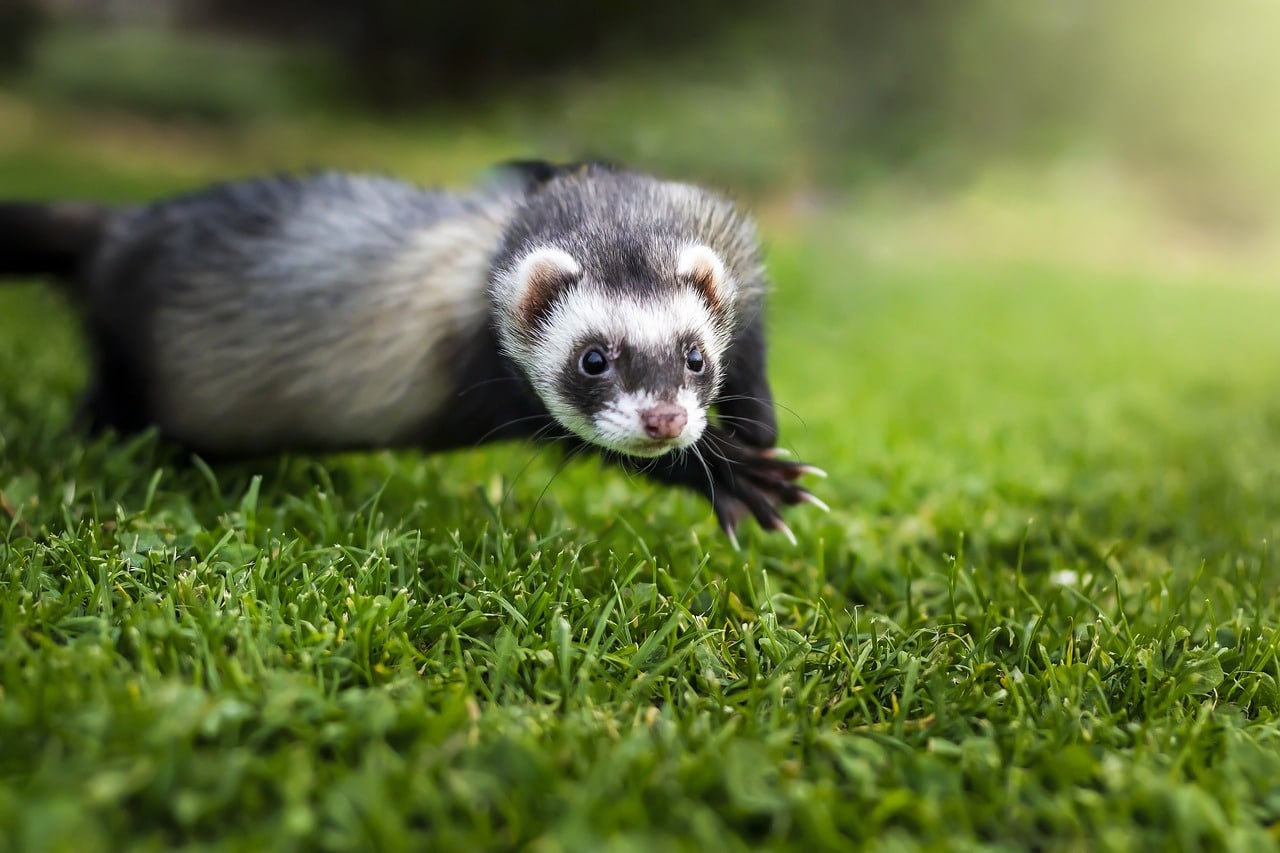How to Establish a Safe Play Area for Ferrets in Your Home?

Welcome, pet lovers! In this comprehensive guide, we will tackle an intriguing topic: how to create a safe play area for your ferret within your home. Ferrets, with their boundless energy and insatiable curiosity, need a secure and stimulating environment to thrive. We’ll delve into the essential aspects such as the optimal cage, food, water provisions, bedding, toys, litter management, and more. So, roll up your sleeves and get ready to transform your space into a ferret-friendly paradise.
Setting Up the Perfect Enclosure
Before we talk about a play area, the first step involves establishing a comfortable and secure enclosure for your pet. A ferret’s cage is more than just a housing unit; it’s their own private space, a miniature version of their natural habitat. It should provide comfort, security, and a platform for their instinctual behaviors.
In parallel : Tips for traveling with your pet
When choosing a cage, size matters. Ferrets are active creatures and need plenty of space to move around. Ensure the cage is spacious enough to house food and water dishes, litter boxes, bedding, and toys. A multi-level cage is an excellent choice as it provides opportunities for climbing – a favorite ferret activity.
The cage floor should be solid, not wire, to prevent foot injuries. Also, keep the cage in a quiet, comfortable area of your home, away from direct sunlight and drafts.
Also read : What Are the Essential Considerations for Adopting a Blind Dog?
Bedding and Litter Management
Once the cage is sorted, bedding is the next major consideration. Wood shavings, though popular, are a no-no, as they can cause respiratory issues in ferrets. Instead, opt for soft, washable fabric pieces such as old towels, fleece blankets, or specially designed pet bedding.
Ferrets are relatively easy to litter train. Place a litter box in a corner of the cage where your ferret prefers to do its business. Use a ferret-friendly litter; avoid clumping and dusty types as they can be harmful if ingested or inhaled. Remember to clean the litter box regularly to keep the cage hygienic and odor-free.
Food and Water Provisions
Proper nutrition is imperative for your ferret’s health and wellbeing. High-quality, ferret-specific food is the best choice. Ferrets have a high metabolic rate, so food should be available at all times. Avoid fruits, vegetables, and dairy products as ferrets can’t digest these foods.
Fresh, clean water should be constantly available. Either a heavy dish or a bottle can serve as a water source. If using a bottle, test it frequently to ensure it’s working correctly.
Ferret-Friendly Toys
Toys are an integral part of a ferret’s environment, providing both mental and physical stimulation. They don’t have to be expensive; simple things such as small balls, soft toys, cardboard tubes, and cloth tunnels will keep your pet entertained.
However, be mindful of the toy’s safety. Avoid toys with small parts that can be chewed off and swallowed, causing an intestinal blockage. Check the toys regularly for signs of wear and tear and replace them as necessary.
Creating a Safe Play Area
Finally, let’s talk about the play area. Aside from their cage, ferrets should have a designated area where they can explore, exercise, and engage their curiosity. Ferrets are notorious for their ability to squeeze into tight spaces, so make sure the area is ferret-proofed. This means blocking off small openings, securing loose wires, and removing harmful substances.
The play area should also be enriched with toys, tunnels, and climbing structures. But remember, even with a play area, ferrets should always be supervised when out of their cage.
So there you have it, folks! A comprehensive guide on setting up a safe, comfortable, and stimulating environment for your pet ferret. Remember, a happy ferret is a healthy ferret. Enjoy the process and happy pet parenting!
Importance of Interaction and Socialization
Ferrets, like humans, crave social interaction and companionship. They are social creatures and love to engage in play and exploration with their fellow ferrets and their human caretakers. It’s essential not to forget that your ferret needs more than just a safe and comfortable habitat; they also need your time, attention, and love.
Playtime is an excellent opportunity for you to bond with your pet. Be present and active during these moments. Play hide and seek, chase, or tug of war with your furry friend. Not only will these activities help satisfy your ferret’s playful nature, but they will also help establish a strong bond between you two.
Interaction is not only limited to playtime. Regular handling helps your ferret get used to human contact and makes management tasks such as grooming and health checks easier. Always handle your ferret gently and with care, respecting their boundaries and comfort levels.
Remember, socialization should extend beyond the home. Exposing your ferret to new environments and experiences can be beneficial for their mental stimulation and adaptability. Consider taking your ferret for supervised outdoor excursions or visits to friends’ homes, always ensuring their safety and comfort.
The Role of Training in Ferret Safety
Training plays a significant role in ensuring your ferret’s safety. Start by litter-training your ferret, teaching them to use a litter tray in their cage. Ferrets love a clean living space, and once they get the hang of it, they tend to use the litter box consistently. Remember, patience and consistency are key during the training process.
Further, train your ferret to understand basic commands like "No," "Come," or "Stay." This can be extremely helpful in preventing them from getting into dangerous situations. Use positive reinforcement techniques such as treats, praise, or extra playtime to reward good behavior.
Also, introduce your ferret to the concept of boundaries within your home. Despite ferret proofing your house, there may be areas that are off-limits due to various reasons. Training your ferret to respect these boundaries can go a long way in keeping them safe.
Conclusion
Creating a safe play area for your ferret within your home may seem like a daunting task, but with the right guidance and a bit of effort, it can be accomplished effectively. Remember, the goal is not only to create a physically safe space but also an environment that caters to your ferret’s mental and emotional wellbeing.
Understand that every ferret is unique and what works for one may not work for another. Observe your pet, understand their needs and preferences, and tailor-manage their living space accordingly.
Providing a safe, comfortable, and engaging environment significantly contributes to your ferret’s overall health and happiness. So take that extra step, make that additional effort, and transform your home into a perfect haven for your pet. It’s an investment you will never regret, and the reward – a happy, healthy, and content ferret – is definitely worth it. Just remember, a home is not merely a living space but a space filled with love, care, and understanding.
